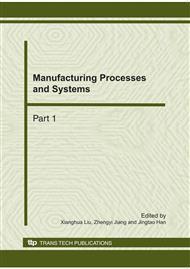p.732
p.736
p.740
p.744
p.749
p.753
p.758
p.763
p.769
The Synthesis and Properties of a Novel Solid Polyphosphazene Electrolyte for Lithium Ion Battery
Abstract:
Polydichlorophosphazene was synthesized from hexachlorocyclotriphosphazene by high-temperature ring-opening polymerization, and poly(2-(2-methoxyethoxy) ethanol phosphazene)(MEEP) was synthesized by reacting polydichlorophosphazene with alcohol sodium. The optimal synthesis parameters were obtained and the structure of MEEP was analyzed by NMR. Then polyphosphazene electrolyte was prepared by mixing MEEP with LiCF3SO3. The results indicated that the electrolyte prepared in this paper has high decomposition temperature, and its room-temperature conductivity is up to 1.187×10-4 S/cm.
Info:
Periodical:
Pages:
749-752
Citation:
Online since:
October 2010
Authors:
Price:
Сopyright:
© 2011 Trans Tech Publications Ltd. All Rights Reserved
Share:
Citation:


